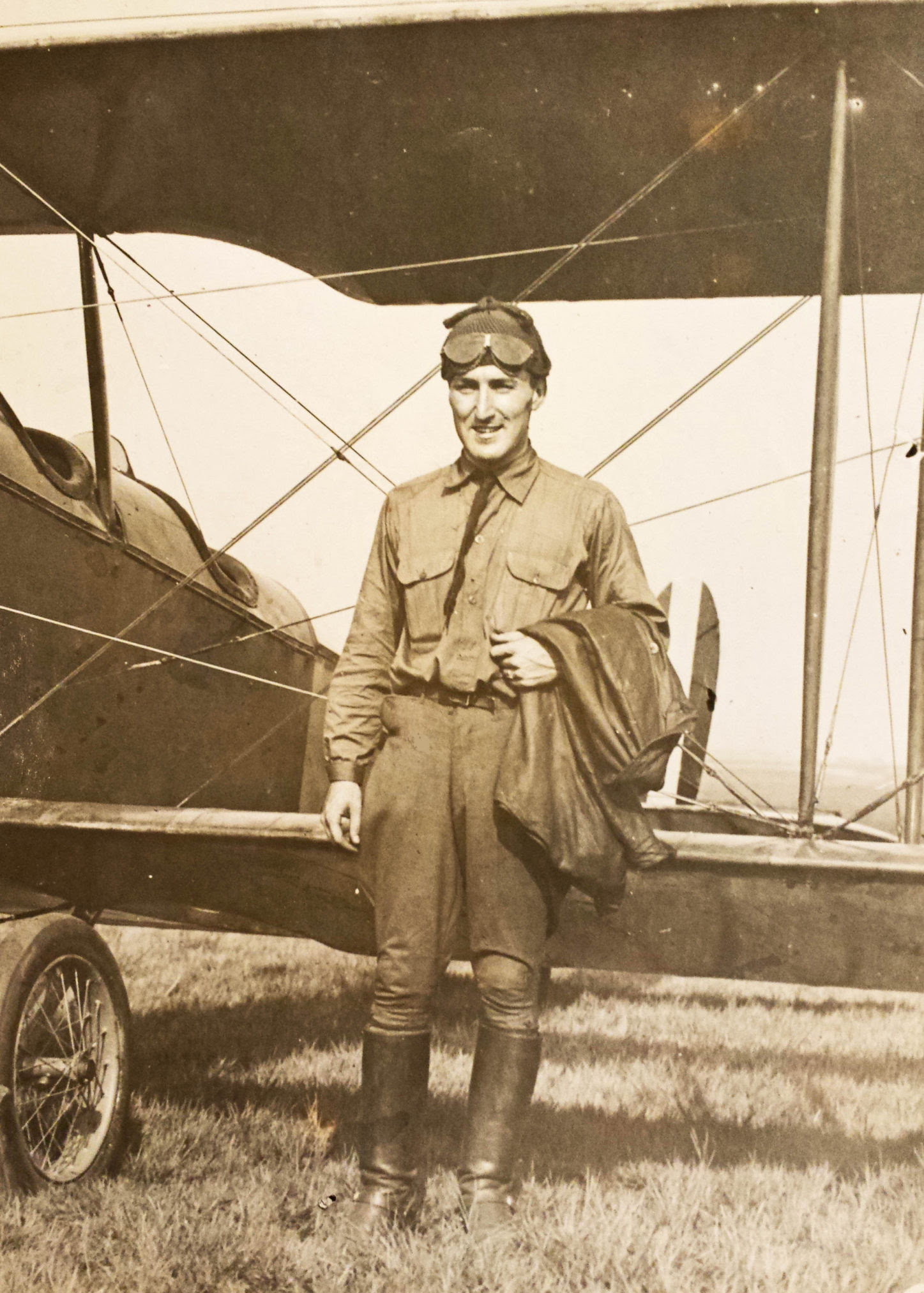
This article is part of a weekly series on Kane County’s amazing history, published on KaneCountyConnects.com. Intro from Elizabeth Marston, director of the Elgin History Museum:
Anson Clark was one of the most successful people ever to come out of Elgin, but I had no idea he was a great WW1 pilot and that the picture showed him when he was a key part of a notable aviation story.
Rich Renner, Elgin historian, researched and wrote this article, trying to keep it short. (Rich had to leave out the part about him singing in a Broadway show just after the war. What a life!)
The Extraordinary Anson Clark, WWI Flying Ace
November 2018 marks the centennial of the end of a war so extensive and terrible its participants could call it only the Great War. Modern concepts of civil liberty and privacy did not exist in 1918, and Americans were under unprecedented government, media and popular pressure to provide their time, money and lives for victory over the “Hun,” “autocracy,” and “militarism.”
In Elgin, local newspapers held out the Clark family for their “100 Per Cent” support of the war. Emma Clark’s four children – three boys and a girl – were enlisted in the war effort while she knitted apparel for the troops.
Recently, I obtained a photograph of her eldest son, Lt. Anson L. Clark. The photograph shows 24-year-old Anson with his Curtiss “Jenny” biplane at his airbase in Mineola, NY, on Aug. 4, 1918, and about to set out on one of the notable aviation experiences of the war.
An Elgin native and graduate of Cornell University, Anson had enlisted in 1917 and by early 1918 was a second lieutenant on his way to flight training at Camp Taliaferro near Fort Worth.
He proved so adept as a pilot that by summer 1918 he had been selected for America’s premier flying corps, the First Provisional Wing. In mid-August, 11 pilots of the Wing set off on a grand, 11-city tour to promote military aviation to the general public.
Starting in Dayton, OH, the Wing and a small group of veteran British pilots thrilled each city with a “flying circus” of aerial stunts with all the spins, loops, dives and turns of real combat. Each city greeted the aviators as stars, with extensive newspaper coverage and gala banquets.
The Wing was a remarkable handful of young men, including a former football star, flight record holders, and a fellow named Earl Carroll, who would gain fame as a Broadway and Hollywood showman. Even in this group, Anson stood out. He was selected as the aid to the Wing’s commander, and his picture was featured in the Kansas City Star promoting the show in that city.

Kansas City Star, Aug. 22, 1918.
But a picture showing a skull and crossbones on another Wing member’s plane reminds us that Anson was in a dangerous business.
Just before the tour he had participated in a spectacular aerial funeral over Mid-Manhattan for another pilot and from his plane dropped clusters of roses before St. Patrick’s Cathedral. As the tour began, one of the British pilots died in a crash in Cincinnati.
One of the first persons to reach the downed flyer was the group’s flight surgeon who, days later, was killed and a Wing pilot seriously injured in another crash.
Anson, however, survived as a key figure in a tour which introduced military aviation to millions of Americans and was the forerunner of the modern airshows by the Navy’s Blue Angels and the Air Force Thunderbirds.
His mother, Emma Clark, must have been proud but surely had special reasons to join her fellow Elginites celebrating the armistice ending the war on Nov. 11, 1918.
For Anson, though, the war had been an exciting introduction to a life of extraordinary success and achievement. He became a doctor, practiced at the Mayo Clinic, retired from medicine to found an oil company, and channeled his wealth into a charitable foundation.
More than 50 years after his death, his name is remembered through a memorial lecture, a summer research program, a professorship at the Mayo Clinic, a scholars program at Texas Tech, and the Dr. Anson L. Clark Scholarship Fund providing support for hundreds of Dallas students to attend colleges and universities in Texas.
If you like learning about Elgin’s people and history, sign up for our newsletter! It will also keep you updated on what’s going on at the museum. [mc4wp_form id=”3600″]
